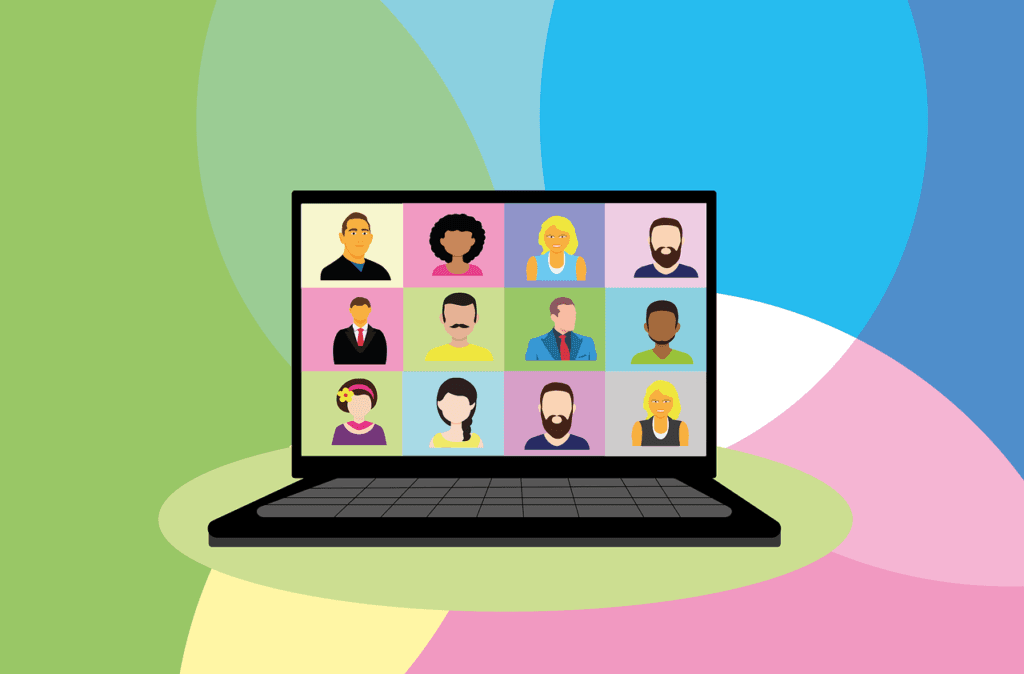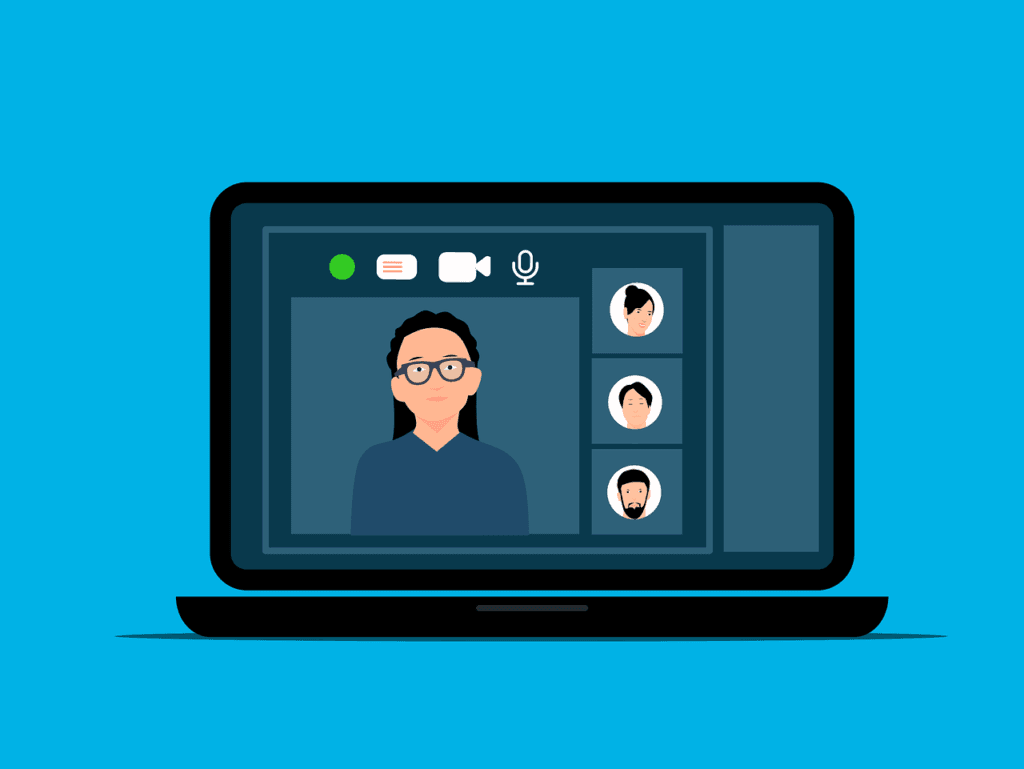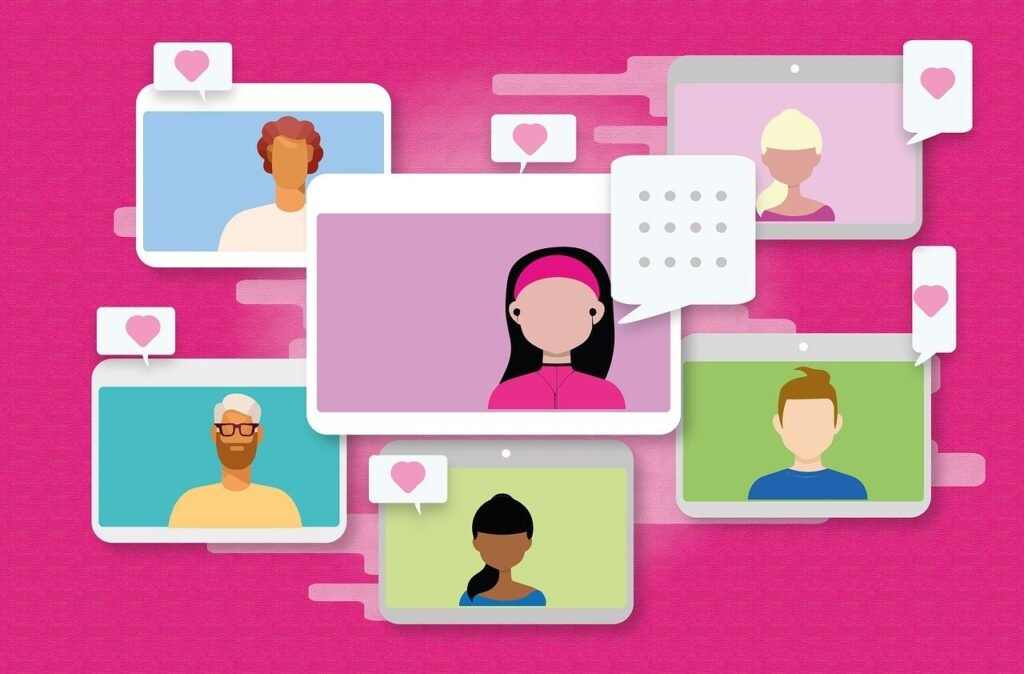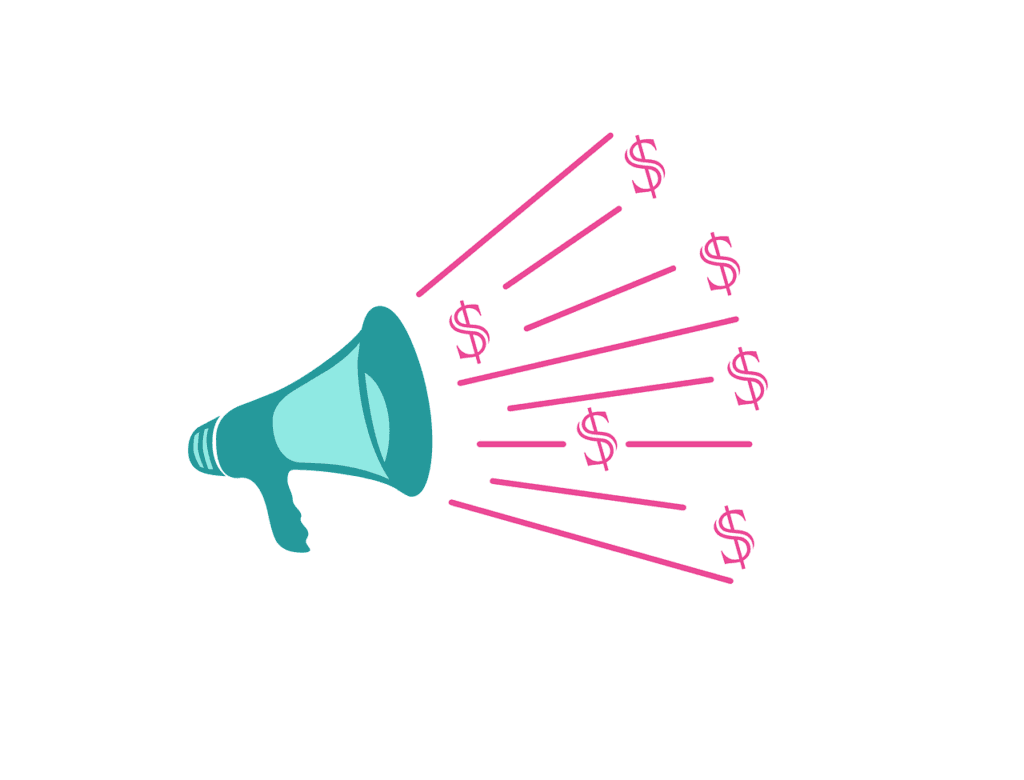This Article has been revised, edited and added to, by Poulomi Chakraborty.
- Setting the Stage for Affiliate Marketing Success Through Webinars and Live Events
- Why Webinars and Live Events Matter
- Crafting a Winning Webinar
- Leveraging Live Events for Maximum Impact
- Best Practices for Webinars and Live Events in Affiliate Marketing
- Fine-Tuning Webinar Content for Conversion
- Maximizing Live Event Participation
- In Conclusion: The Synergy of Webinars, Live Events, and Affiliate Marketing
Affiliate marketing has evolved, branching out into various mediums to engage and convert potential customers. Among these tools, webinars and live events stand out as dynamic game-changers. They bring a human touch to the digital realm of affiliate marketing, adding authenticity, engagement, and value. But how do these formats influence affiliate success, and how can marketers harness their potential? Let’s unravel the power of webinars and live events in the world of affiliate marketing.
Setting the Stage for Affiliate Marketing Success Through Webinars and Live Events

In the vibrant world of affiliate marketing, webinars and live events hold a unique place. They are not just tools for engagement; they are powerful platforms for building trust, showcasing expertise, and driving conversions. As a startup founder, tapping into the potential of these formats can be a pivotal strategy for your affiliate marketing success.
Crafting a Compelling Narrative
The first step to leveraging webinars and live events in your affiliate marketing strategy is to develop a compelling narrative. This narrative should resonate deeply with your target audience and align seamlessly with the products you are promoting.
Start by understanding the pain points and aspirations of your audience. What challenges do they face? What solutions are they seeking? How can the products you promote help them overcome these challenges or achieve their goals?
Once you’ve mapped out these elements, craft a story that weaves the products into the narrative as essential tools for success. Remember, the key is to be authentic and genuine. Your audience needs to feel that you truly understand their needs and that you are there to help, not just to sell.
Leveraging the Power of Expertise
For webinars and live events to truly shine, they must be anchored on expertise. As a startup, you might not have decades of experience to draw on, but you have expertise in your niche that you can share.
Bring in experts who can speak authoritatively on topics relevant to your audience. This could be product developers, industry experts, or even satisfied customers who have a story to share.
Prepare your speakers to not only deliver valuable content but also to engage with the audience through Q&A sessions, live demonstrations, and real-time feedback. This interaction is invaluable as it adds a layer of credibility and trust to your presentation.
Creating an Interactive Experience
Interactivity is at the heart of successful webinars and live events. The more you engage your audience, the deeper the connection you create. Use tools like polls, surveys, and chat features to keep the audience involved. Encourage live tweeting or use event-specific hashtags to widen the conversation and build community around your event.
Moreover, tailor the experience to your audience’s preferences. Some may enjoy a deep-dive technical discussion, while others might prefer practical tips and straightforward advice. Understanding your audience’s learning style and preferences will help you tailor your content and delivery accordingly.
Utilizing Visuals and Demonstrations
A picture is worth a thousand words, and this is particularly true in webinars and live events. Utilize high-quality visuals to help illustrate complex ideas and keep your audience engaged. Live demonstrations of the product can also be incredibly effective. They not only show the product in action but also help to dispel doubts and build confidence in the product’s capabilities.
Following Up: The Key to Conversion
The end of your webinar or live event is just the beginning of the conversion process. Implement a robust follow-up strategy to capitalize on the interest generated. Send out thank you emails, provide additional resources, and offer special deals or bonuses to attendees. Make it easy for them to take the next step with clear calls to action and straightforward purchasing processes.
Webinars and live events can dramatically enhance your affiliate marketing efforts if done correctly. They allow you to build a rapport with your audience, demonstrate your expertise, and ultimately drive conversions. Remember, the success of these events lies in your ability to connect genuinely, provide value, and engage your audience throughout the experience.
Why Webinars and Live Events Matter

In the bustling arena of digital marketing, webinars and live events represent more than just an opportunity to present content; they are vital tools for creating personal connections and fostering community. For startups, especially in the affiliate marketing domain, these interactions can be transformative, elevating your brand from one among many to a trusted leader in your niche.
Building Personal Connections
Webinars and live events provide a unique platform to engage directly with your audience in real-time. Unlike static blog posts or pre-recorded videos, live interactions allow you to respond to queries, clarify doubts, and adjust your presentation based on live feedback. This dynamic interaction fosters a personal connection that is often missing in other forms of digital marketing.
This personal touch is crucial in converting passive viewers into active participants and, eventually, into loyal customers. When people feel connected to a brand on a personal level, they are more likely to trust the brand and make a purchase. For a startup, establishing such trust is invaluable.
Establishing Thought Leadership
Thought leadership is about positioning yourself as an expert in your field. Webinars and live events are excellent platforms for showcasing your knowledge and expertise. By addressing complex topics, providing insightful analysis, and offering novel solutions, you not only inform your audience but also inspire them.
Thought leadership builds respect and credibility. When your audience regards you as an authority in your niche, they are more likely to refer to your content, recommend your products, and remain loyal to your brand. For affiliate marketers, being seen as an authority can significantly amplify the effectiveness of your recommendations and increase your conversion rates.
Enhancing Brand Visibility
Webinars and live events also play a critical role in enhancing your brand’s visibility. By hosting events on popular platforms and promoting them across your social media channels, you reach a broader audience. Additionally, encouraging participants to share the event within their networks can lead to a viral effect, substantially increasing your brand’s reach.
This increased visibility is particularly beneficial for startups looking to establish a foothold in competitive markets. The more people see and interact with your brand, the greater your chances of being recognized and remembered.
Driving Engagement and Conversion
The interactive nature of webinars and live events significantly drives engagement. Participants are not just passive recipients of information; they are active contributors through questions, comments, and discussions. This level of engagement is invaluable for building a community around your brand.
Moreover, the real-time feedback obtained during these events can be used to refine your marketing strategies and product offerings. Understanding what resonates with your audience can help you tailor your approach to better meet their needs, resulting in higher conversion rates.
Long-Term Impact
Finally, the impact of webinars and live events extends far beyond the events themselves. The content generated during these sessions can be repurposed into various formats like blog posts, podcasts, and video snippets, providing lasting value. Additionally, the relationships developed during these interactions can lead to ongoing engagements, repeat sales, and long-term loyalty.
In essence, webinars and live events are not just about the immediate benefits of engagement and sales; they are about building a sustainable, respected brand that resonates with people on a deeper level. For startups in affiliate marketing, this could mean the difference between being a transient choice and becoming a preferred brand.
Crafting a Winning Webinar

Hosting a successful webinar is more than just talking about your product or service; it’s about creating an event that is informative, engaging, and memorable. For startups in the realm of affiliate marketing, a well-crafted webinar can significantly boost your credibility and drive sales. Here’s how to ensure your webinar is a standout event.
Understanding Your Audience
The foundation of a winning webinar is a deep understanding of your audience. Who are they? What are their challenges? What solutions are they seeking? Tailoring your content to meet the specific needs and interests of your audience increases relevance and engagement.
This could involve conducting surveys, monitoring social media conversations, or gathering data from previous webinars to refine your understanding of what your audience truly values.
Structuring Your Content
A well-structured webinar flows smoothly, holds the audience’s attention, and builds towards a clear call to action. Start with a strong introduction that hooks your audience right away, perhaps with a surprising statistic, an intriguing question, or a compelling story.
From there, move into the main content, organized clearly around key points. Each section should build on the last, weaving a coherent narrative that guides your audience to a natural and compelling conclusion.
Engaging and Interactive Presentation
The best webinars are highly interactive. Plan to engage your audience every few minutes with polls, questions, or prompts for comments. Use visual aids like slides, charts, and videos to break up the monotony of spoken words and maintain interest. Tools like screen sharing can also be helpful to demonstrate software or show examples live.
Leveraging the Right Technology
Choosing the right platform is crucial for delivering a smooth webinar experience. The platform should support all the interactive features you plan to use and be robust enough to handle the number of participants you expect. It should also be user-friendly, ensuring that participants can easily access and interact with the webinar without technical difficulties.
Practice Makes Perfect
Before going live, run several rehearsals to ensure everything works as expected. Practice not only helps you smooth out any technical issues but also allows you to refine your delivery. The more comfortable you are with the content and technology, the more confident and engaging you will be during the live event.
Follow-Up for Success
The end of your webinar should not be the end of your engagement with participants. Follow up promptly with a thank-you email, a survey to gather feedback, and additional resources related to the webinar topic. Include a clear call to action in your follow-up, such as a special offer on the products discussed or an invitation to schedule a one-on-one consultation.
A winning webinar requires careful planning, from understanding your audience and structuring your content to engaging delivery and thoughtful follow-up. By focusing on these elements, you can ensure that your webinar not only meets but exceeds the expectations of your audience, strengthening your brand and boosting your affiliate marketing efforts.
Leveraging Live Events for Maximum Impact
Live events offer a dynamic platform for affiliate marketers to deepen relationships, enhance brand visibility, and drive sales. When executed thoughtfully, these events can transform potential customers into loyal advocates for your brand. Here’s how you can maximize the impact of live events in your affiliate marketing strategy.
Strategic Planning and Goal Setting
The first step in leveraging live events effectively is strategic planning and clear goal setting. What do you hope to achieve through this event? Whether it’s increasing brand awareness, launching a new product, or building deeper customer relationships, your goals will dictate every aspect of the event planning process from the format to the content, and the promotional strategies.
Selecting the Right Format and Venue
Choosing the right format and venue is crucial for the success of your live event. The format should align with your goals and suit your target audience’s preferences. For example, a product launch might benefit from a high-energy, celebratory atmosphere, while a training session for a complex product might be more effective in a workshop setting.
The venue also plays a significant role in setting the tone for the event. It should be accessible, comfortable, and aligned with the brand image you want to project. Whether it’s a cozy seminar room or a large convention center, make sure it fits the scale of your event and your audience’s expectations.
Engaging Content Delivery
Content is king at any live event. Plan to deliver value through every moment of the event. This could mean having keynote speakers who are thought leaders in the industry, interactive workshops that solve real problems, or product demonstrations that showcase the benefits of what you’re promoting. Remember, the primary goal is to engage your audience fully and make the content relevant and applicable to them.
Networking Opportunities
One of the greatest benefits of live events is the opportunity for face-to-face networking. Facilitate these interactions by incorporating networking breaks, interactive sessions, and social activities into the event schedule. These interactions can significantly enhance the attendee experience, creating a community around your brand and generating valuable business connections.
Utilizing Technology
Incorporate technology to enhance the live event experience and extend its reach. Use live streaming to broadcast the event to those who could not attend in person, increasing your audience and maximizing impact. Interactive apps can also enhance participant engagement, allowing for real-time feedback, personalized agendas, and social sharing features.
Post-Event Engagement
The relationship with your attendees shouldn’t end when the event does. Follow up with participants to thank them for attending, request feedback, and provide additional resources related to the event. This not only enhances their experience but also keeps your brand top of mind. Additionally, use the content generated during the event—such as videos, slides, and photos—in your ongoing marketing efforts to attract new leads and engage existing customers.
By focusing on these strategic elements, you can ensure that your live events are not just memorable gatherings but powerful tools that drive your affiliate marketing goals forward.

Related: Check out our free SEO suite

Best Practices for Webinars and Live Events in Affiliate Marketing
Webinars and live events are potent tools in the arsenal of affiliate marketing, offering unique opportunities to engage directly with an audience, demonstrate products, and convert interest into sales. To maximize the effectiveness of these platforms, follow these best practices tailored specifically for affiliate marketers.
Clear and Compelling Messaging
The success of your webinar or live event hinges on the clarity and appeal of your messaging. It’s crucial to articulate the value of the event and what attendees will gain from it. Ensure that all communications—whether emails, social media posts, or advertisements—are consistent, clear, and directly tied to the benefits for the audience. Highlight exclusive content, expert speakers, or unique opportunities they’ll experience by attending.
Audience Targeting and Personalization
Understanding and targeting the right audience is critical. Use data from your website, social media, and previous events to identify potential attendees who are most likely to be interested in the products you’re promoting. Tailor your event content to meet the specific needs and preferences of this audience. Personalization can extend to the event experience itself, such as offering breakout sessions or content tracks tailored to different audience segments.
Leveraging Partnerships
Partnerships can significantly enhance the reach and impact of your webinars and live events. Collaborate with influencers, thought leaders, or other businesses that share a target audience but aren’t direct competitors. These partners can help promote the event, add credibility to it, and bring in a broader audience. In return, they gain exposure to your audience, creating a mutually beneficial relationship.
Robust Promotion Strategy
Effective promotion is key to ensuring high attendance and engagement for your events. Develop a comprehensive promotion plan that includes email marketing, social media campaigns, paid advertising, and even traditional media outlets if appropriate. Consider early bird registrations or special offers to incentivize early sign-ups. Also, leverage your partners’ and speakers’ networks to expand your promotional reach.
Interactive and Engaging Format
To keep your audience engaged throughout the webinar or event, integrate interactive elements such as Q&A sessions, polls, live demonstrations, and real-time discussions. These elements make the experience more dynamic and give the audience a sense of participation and immediate value.
Technical Reliability
Nothing undermines the credibility of an online event like technical difficulties. Ensure the platform you choose is reliable, scalable, and provides quality audio and video. Conduct technical rehearsals to troubleshoot potential issues in advance. Have a technical support team ready to assist during the event to handle any unforeseen issues swiftly.
Measurable Outcomes and Follow-Up
Set clear, measurable objectives for your event, such as number of attendees, lead generation, or specific sales targets. Use tools to track these metrics during and after the event. After the event, follow up with attendees through emails, thank-you notes, and special offers related to the products discussed during the event. This not only helps convert leads into sales but also strengthens customer relationships and encourages repeat attendance.
Continuous Improvement
After each event, gather feedback from participants to identify strengths and areas for improvement. Analyze performance against your objectives, and use these insights to refine and improve future webinars and live events. Continuous improvement will help you maximize the return on investment in these platforms over time.
By adhering to these best practices, you can enhance the effectiveness of your webinars and live events, making them not just one-off occasions but integral parts of your affiliate marketing strategy that contribute to ongoing growth and success.
Fine-Tuning Webinar Content for Conversion

To ensure your webinars not only captivate but also convert, it’s essential to strategically develop and fine-tune your content. This involves crafting every part of the webinar—from the initial promotion to the final call-to-action (CTA)—with conversion in mind. Here’s how to optimize your webinar content effectively.
Starting with a Strong Hook
Your webinar should start with a compelling hook that grabs attention and sets the stage for the value you will deliver. This could be a surprising statistic, a provocative question, or a brief story that directly relates to the challenges your audience faces. The hook should resonate with your target demographic and succinctly convey why staying for the entire webinar will benefit them.
Delivering Value-Driven Content
The core of your webinar must provide immense value that is relevant and actionable. Focus on delivering content that educates your audience on solving specific problems or achieving specific results. Use case studies, real-world applications, and live demonstrations to illustrate your points and show the practical benefits of the products you are promoting.
Keep the content focused and organized into digestible segments. This makes it easier for the audience to follow along and retain the information being presented. It also helps in building a logical flow towards your ultimate CTA.
Engaging Presentation Techniques
Utilize engaging presentation techniques to maintain interest and energy levels throughout the webinar. This includes varying your tone, incorporating visuals like slides and videos, and engaging directly with the audience through polls, interactive Q&A sessions, and direct responses to live comments. These techniques not only keep the webinar lively but also foster a sense of community and interaction.
Utilizing Testimonials and Social Proof
Incorporating testimonials and social proof into your webinar can significantly enhance trust and credibility. When potential customers see or hear about others who have succeeded or benefited from the product, their confidence in making a purchase decision increases. Highlight specific examples where your product has made a difference, and if possible, bring in a satisfied customer to share their experience live.
Strategic Placement of Calls-to-Action
CTAs are critical in converting interest into action. Your webinar should include multiple CTAs at strategic points. Start with softer CTAs early in the webinar, such as inviting participants to download a free resource. Gradually build up to more significant commitments like signing up for a product demo or making a purchase, especially towards the end when their engagement is at its highest.
Ensure that each CTA is clear and easy to follow. Use urgent, action-oriented language, and make the process of taking the next step simple and straightforward. Provide incentives for immediate action, such as limited-time offers or exclusive bonuses for webinar attendees.
Follow-Up with Precision
The follow-up after the webinar is just as important as the content of the webinar itself. Send out a thank you email that includes a replay of the webinar, additional resources, and another opportunity to take advantage of the webinar’s CTA. Segment your follow-up based on participant behavior during the webinar—for example, those who asked questions might receive more personalized follow-up, which could lead to higher conversion rates.
Continuous Optimization
Finally, always look to improve. Analyze the performance of each webinar in detail. Look at attendance rates, drop-off points, engagement during the webinar, and conversion rates post-webinar. Gather feedback from participants to see what worked and what didn’t. Use this information to tweak and optimize future webinars, making each one more effective than the last.
By fine-tuning your webinar content for conversion through these strategic approaches, you can maximize the effectiveness of your sessions, turning them from informative presentations into powerful tools for driving sales and building long-term customer relationships.
Maximizing Live Event Participation

Ensuring that your webinar content is finely tuned for conversion involves more than delivering information—it’s about crafting a seamless journey from initial curiosity to confident purchase. Here’s how to further refine your webinar content for higher conversion rates.
Segmenting Your Audience for Tailored Content
Different segments of your audience may have varying levels of familiarity with your products or different interests that brought them to your webinar. By segmenting your audience based on factors such as previous interactions, purchase history, or specific interests, you can tailor your webinar content to address the unique needs and pain points of each group. This targeted approach makes your content more relevant and compelling, increasing the likelihood of conversion.
Integrating Interactive Elements Strategically
Interactive elements such as live polls, quizzes, or interactive Q&A sessions can significantly increase audience engagement and investment in the content. However, it’s essential to integrate these elements strategically. Use interactive moments to gather insights about your audience’s preferences or objections, which can then be addressed in real-time by modifying your pitch or providing instant clarifications. This responsiveness not only keeps the audience engaged but also builds trust and reduces barriers to conversion.
Demonstrating Product Value Clearly
One of the key challenges in webinars is conveying the tangible value of a product, especially when the audience can’t physically interact with it. Overcome this by using clear, benefit-focused language, demonstrating use cases, and showing real-life success stories or testimonials. Whenever possible, perform live demonstrations to show the efficacy or ease of use of your product. Seeing the product in action can dramatically reduce skepticism and encourage conversions.
Crafting a Compelling Narrative
People resonate with stories more than with straightforward sales pitches. Craft a narrative around your webinar content that includes challenges, solutions, and successful outcomes. This storytelling approach should not only educate but also emotionally connect with the audience, making the webinar experience more relatable and memorable. This emotional investment can significantly impact the decision-making process, nudging attendees toward a purchase.
Reinforcing Key Messages
Repetition is a powerful tool in ensuring your key messages are remembered. Strategically reinforce core benefits and differentiators of your product throughout the webinar. This doesn’t mean being repetitive in a boring way, but rather finding various angles and opportunities to highlight important aspects, ensuring that these points are understood and retained by the audience.
Optimizing the Closing Moments
The final minutes of your webinar are crucial and should be handled with care. Summarize key points succinctly to reinforce the value proposition. Your closing should include a strong, clear call to action that guides attendees on exactly what to do next. Whether it’s signing up for a trial, scheduling a consultation, or making a purchase, make the action steps simple and straightforward.
Testing and Refining Your Approach
Finally, the process of fine-tuning your webinar content should be ongoing. Employ A/B testing for different segments of your webinar, such as the opening hook, the main content delivery, and the closing CTA. Analyze data from each webinar iteration to understand what works best and refine your approach based on those insights. Continuous improvement based on solid data will help you maximize your webinar’s effectiveness in driving conversions.
By applying these advanced strategies to fine-tune your webinar content, you’ll not only enhance the quality of your presentations but also increase their effectiveness in converting attendees into customers, fostering both immediate sales and long-term loyalty.
In Conclusion: The Synergy of Webinars, Live Events, and Affiliate Marketing
Webinars and live events hold a special place in the toolkit of affiliate marketing, offering a unique combination of personal interaction, immediacy, and versatility. These platforms allow marketers to transcend traditional barriers of digital communication, creating a space where meaningful engagement leads to enhanced trust and loyalty—key drivers of conversion in affiliate marketing. When executed well, webinars and live events can significantly amplify your brand’s voice and broaden the reach of your marketing message, allowing for real-time interaction and feedback that is invaluable for shaping future strategies and understanding consumer needs.
Moreover, they provide an opportunity to showcase products in a dynamic and detailed manner, which is particularly effective in building confidence in those products. The synergy between these tools and affiliate marketing practices creates a powerful mechanism for influencing purchasing decisions, enhancing brand visibility, and ultimately, driving sales. For startups and established brands alike, mastering the art of engaging and converting through these live formats is not just beneficial; it’s essential for staying competitive and relevant in a rapidly evolving digital landscape.
Read Next
- Beauty Branding: The Secrets Behind Successful Cosmetic Brands
- Tailor Branding: How Customization Elevates Brand Perception
- Tequila Branding: The Art of Crafting a Memorable Spirit Brand
- Digital Marketing for Financial Services: Building Trust and Credibility
- Digital Marketing in the Food and Beverage Sector: Engaging Foodies Worldwide






















Comments are closed.